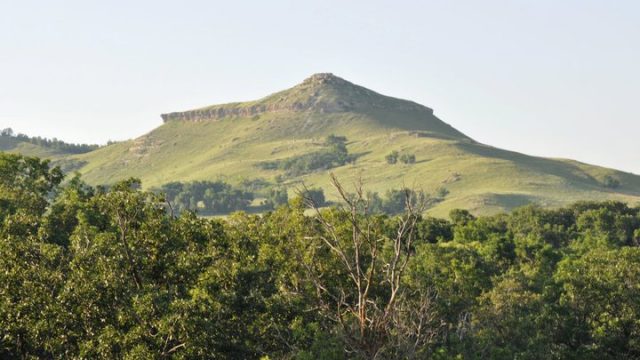Dear Liberals: Western North Dakota Is Not Your Personal Playground

With oil and gas development booming in western North Dakota there are concerns about the impact of that activity on the land around it, and it’s more than just the environment. There is history, culture and scenery worth protecting in the western part of the state.
That being said, when you hear some people talk about western North Dakota – people like Bismarck Tribune columnist Clay Jenkinson, for instance, or certain environmental activists – it almost seems as though they’re forgetting that there are people who actually live there and own the land. They talk about the western part of the state as though it were something that belongs to all of us, when it really doesn’t. Most of the land there is privately owned.
While these people who live away from western North Dakotan long for the days of declining population and economic stagnation (though they don’t use those words), the people who actually live there are happy to see their communities vibrant and growing again. They’re happy their children don’t have to move away to find work.
Last year Fargo Forum editor Matt von Pinnon posted on Twitter that he was happy western North Dakota has poor cell phone service, and he hopes that never changes. Von Pinnon though it was quaint that he could drive through an area and not be bothered by his cell phone, but he gave little thought to the people who actually live in the region and might enjoy better communication service.
That, my friends, is a perfect case-in-point for the attitude many outside of western North Dakota have about oil development there. They forget that landowners have every right to use their land and benefit from the value it holds, and that the citizens of western communities might prefer that their communities grow.
Here’s another example: The owner of the land surrounding the historic “medicine hole” on top of Killdeer Mountain has shut down access to hikers and picnickers. Why? Because supposed conservationists and historical preservationists were so disrespectful of his property rights he decided he’d make a show of force in exercising them:
Brian Benz said he’s tired of people thinking they can make decisions about his property so he closed it off.
Benz, and nearby landowner Craig Dvirnak, said in joint statement that they’ve been disrespected by the National Park Service, tribes, North Dakota State University historian Tom Isern, the Killdeer Mountain Alliance and Attorney General Wayne Stenehjem.
“Private property is private property. If they want to cause me problems, I’ll cause them problems,” Benz said.
Benz owns land along the south side of the mountain that wends up there and he owns the actual Medicine Hole site, which offers a panorama of the historic Killdeer Mountain Battlefield and where a down hole rocky cavern figures into both Sioux and Hidatsa legend. Dvirnak owns land further west on the mountain top. It’s closed, too.
The barbed wire comes after two controversies over the scenic, but quietly appreciated location. The National Park Service commissioned a study of the 1864 Killdeer Mountain Battle to Isern, the historian, and, almost simultaneously, Basin Electric Power Cooperative started siting a major transmission line through a portion of the battlefield study area.
Benz and Dvirnak are angry that the battlefield study was commissioned without their knowledge last fall and blame Isern for presuming their participation. Only one acre of the famous battlefield where Sioux Indians took on and were routed by U.S. infantry is public land. And Benz said he didn’t appreciate people opposing the power line because it would affect the view from the Medicine Hole.
“If people don’t like the view from my mountain top, they don’t have to go up there and nor does anyone else,” Benz said. “The people who are making decisions about my property have never talked to me.”
These property owners have previously blamed Isern and the National Park Service for using the study of the Killdeer Mountain Battlefield to try and derail and powerline project running through the area (one of vital importance to meet growing western electrical demand).
It’s hard to see access to such a beautiful and historic area cut off, but property rights are important, and it’s also hard to blame these landowners for feeling as though their property rights and private interests are getting lost in the political struggle over the economic development of western North Dakota.
Western North Dakota is not some playground to be kept empty and undeveloped for the enjoyment of tourists, arrogant newspaper editors or pontificating scholars. It’s a real place, where real people live and work, and that deserves some respect. Access for tourism and preservation are going to have to be tempered with respect for the people who actually own the property.




